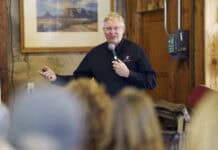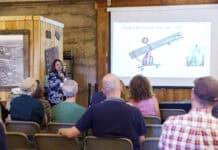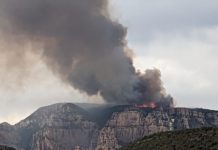Citizens require facts, honesty and integrity from government institutions; otherwise, the whole system begins to collapse as citizens begin to distrust things they know to be true from empirical evidence and the testimony of their own eyes.
We know that those elected to office, i.e., politicians, will tweak, ignore and misrepresent those facts to their own ends for political expediency or to stay on the right side of the electorate so they can win reelection come the next cycle. There’s a reason the ancient Greek word “demagogue” is still on the lips of modern English speakers.
Yet we trust that the facts upon which they build their political statements, platforms and stances are objectively true, items that can be independently verified, tested, documented, researched and publicly shared with the citizens of the polis to shape their own opinions on those issues.
Whether we agree with the opinions of the elected officials on those matters or can be bent to believe them is a key component of the art of politics.
But the tacit agreement we have in civil society is that facts must be true and verifiable. So it is the height of political and civic irresponsibility when elected officials choose to ignore those facts and blatantly pretend that falsehoods are true, or produce political content that is prima facie false and present it as being true.
For instance, government officials in the new presidential administration have blamed the hiring practices of the previous administration for a fatal mid-air collision between a small commercial airliner and a military helicopter in Washington, D.C.
The objective facts are that the area around Washington has “helicopter corridors,” one of which, along the left bank of the Potomac River near Reagan International Airport — the 24th busiest airport in the country — has long been a concern for both military helicopter and commercial pilots.
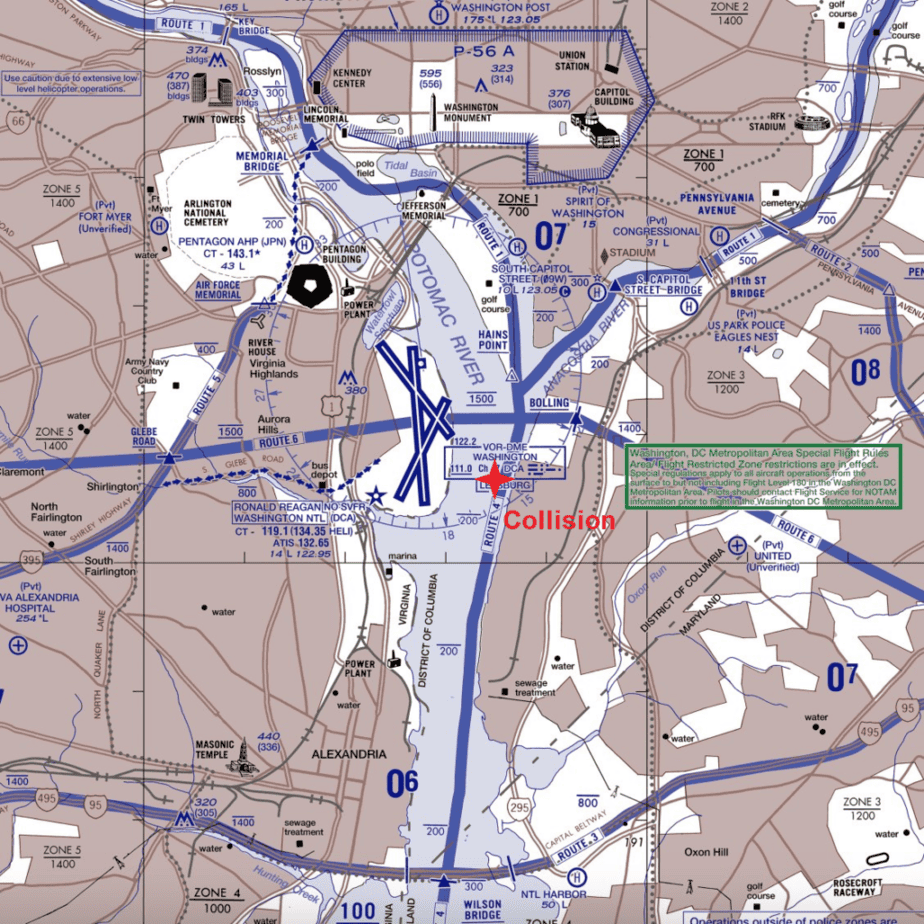
The commercial aircraft was directed to alter course to a different runway eight minutes before landing. Ground lights from the around the U.S. Capitol routine routinely made it difficult to spot low-flying aircraft like military helicopters. The flight logs and the flight data recorders for both aircraft may indicate if the plane was too low or the helicopter too high, resulting in the collision, but to claim a political issue as the cause with little to no evidence is irresponsible at best. The data so far indicates the helicopter was 125 feet above the altitude where it was supposed to be in the corridor.
Locally, on Jan. 26, Sedona’s mayor posted numbers provided by the “Arizona Neighborhood Alliance” on social media that purported to show “Homes lost to STRs,” a.k.a. short-term rentals.

The ad hoc organization has provided no raw data to support its numbers and includes no links to such data on its website. The group also lists no leadership personnel.
The documents the mayor posted claim there have been 5,193 “homes lost to STRs” in the “Sedona market,” which includes the Village of Oak Creek and the Verde Valley.
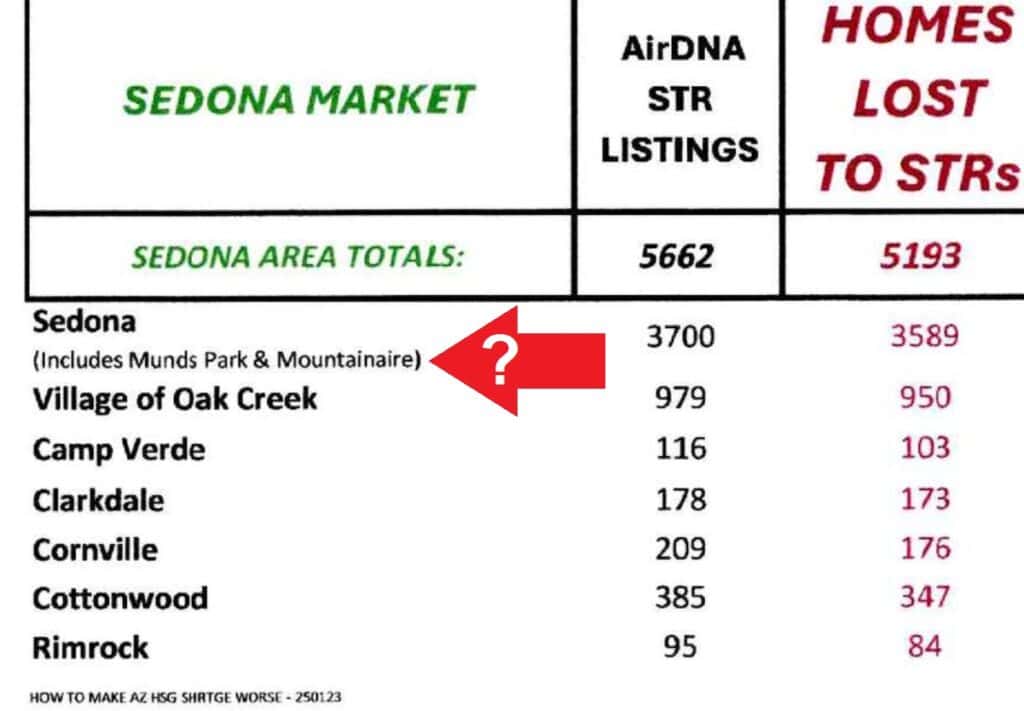
The report specifically claims 3,589 homes lost in “Sedona” — but only in tiny print does the document state that “Sedona” in this context refers not to just the city, but also, inexplicably, to Mountainaire and Munds Park — both communities that are culturally and geographically associated with Flagstaff, not Sedona.
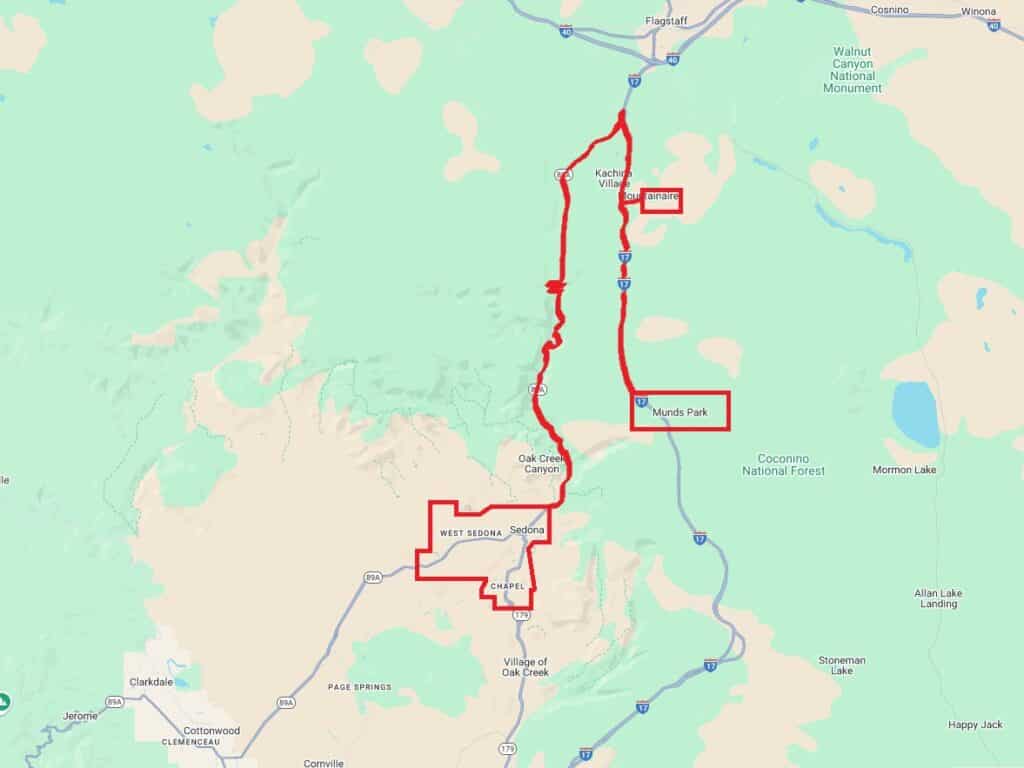
While Munds Park appears to be close to Sedona on a map, having the Mogollon Rim in the way puts it an hour away by car. You can reach Camp Verde and Jerome in less time. The official Munds Park website, mundspark.com, declares it to be “a community located 120 miles north of Phoenix and 20 miles south of Flagstaff” and mentions “Sedona” only once, on its “Things To Do” page, which reads, in total:
Munds Park is a cabin vacation community with 3,163 housing units but only 772 residents. The vast number of those homes are unoccupied cabins used during the summer. They weren’t occupied year-round before Arizona’s short-term rental law was passed in 2016, so it’s no surprise that many have been turned into short-term rentals for the nine, 10 or 11 months of the year when their Phoenix- and California-based owners aren’t using them.
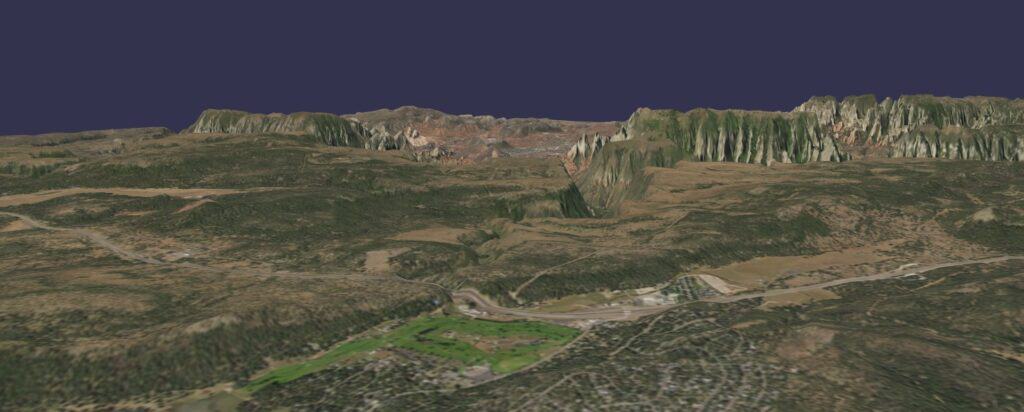
These misleading numbers vastly skew the representation of the “Sedona market” to make the mayor’s purported housing shortage appear far worse than it really is.
There are actually 1,203 STRs in Sedona, according to the city’s short-term rental specialist Teresah Arthur, who accurately and adeptly presented those numbers to City Council in December and has the data, based on city-issued permits, to prove it, unlike the erroneous, exaggerative and fear-mongering “report” that was created for political purposes and is being shared by people who don’t verify any of the data because there is no shared data to verify.
We rely on governments to provide correct data and government leaders to share accurate information with citizens. It’s blatantly irresponsible for any elected official to offer their constituents unvetted, unverified and unverifiable data as “accurate” with inadequate factual support.


